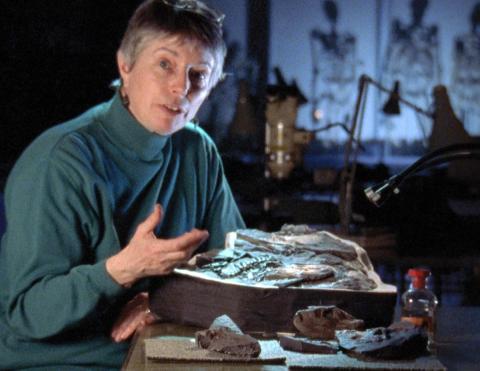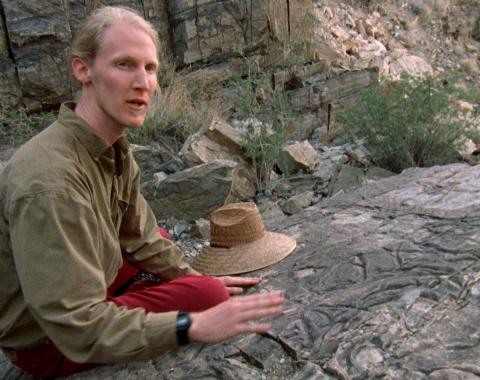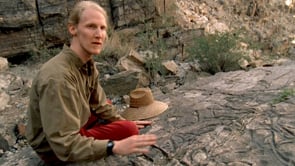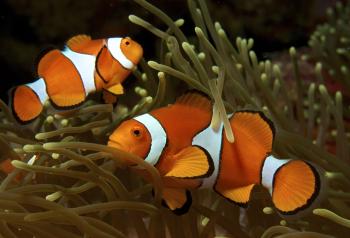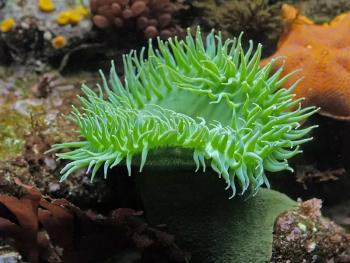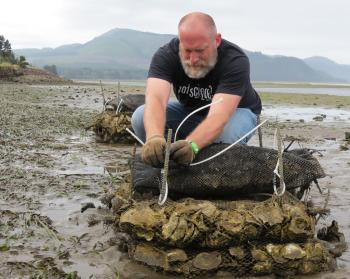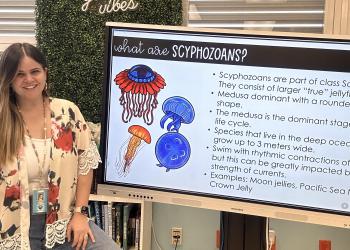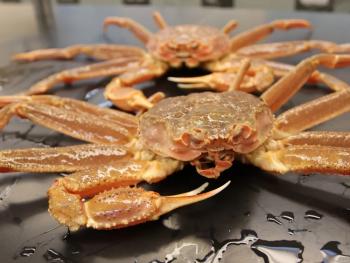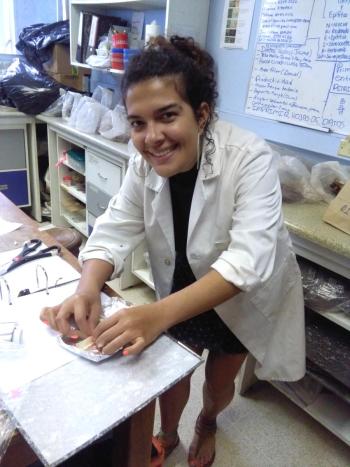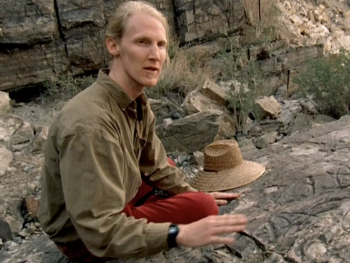
"I'm playing detective in deep time. I mean, I'm trying to think what was on the seafloor 540 million years ago." --Dr. James Hagadorn
Fortunately for Denver Museum of Nature and Science paleontologist James Hagadorn, the seafloor of 540 million years ago is now located in California's Inyo Mountains, between Kings Canyon and Death Valley National Parks. Hagadorn studies ancient trackways of bygone worms in those mountains. Can these tiny tracks paint a portrait of the first animals to move in a forward direction? He believes, yes, these are the tracks of some of the earliest animals capable of moving in a forward direction—animals akin to today's flatworm. “I get a clue here, a clue there, and I try to piece them together and create a story to find out who the culprit was.”
About 565 million years ago, there was sort of a revolution in animal body plans. Organisms for the first time became able to move on their own accord in a directed fashion. We know this because we scientists like Hagadorn can look at their trace fossils. By looking at this trail, we can certainly say that whatever made it had the ability to move sediment. Prior to this time, there weren't many things that could do that. If the ancient worm knew where it was going, Hagadorn and fellow scientists conclude, it most likely possessed an obvious front end or head, was equipped with senses arranged on its head facilitating forward movement, and most likely featured the first primitive brain.
About James Hagadorn’s career
James W. Hagadorn, Ph.D., is a geologist and paleontologist interested in understanding the nature of the earliest marine environments. He learns about these settings by looking at sedimentary rocks exposed in mountain ranges created about 500-600 million years ago throughout the western US and northern Mexico. In these rocks, he examines sedimentary structures, minerals, and fossils that provide clues about the nature of ancient coastal settings, as well as the animals that lived there.
In 1991, Hagadorn received a B.S. in Geology and Environmental Studies from the University of Pennsylvania and in 1995, a M.S. in Geological Sciences from the University of Southern California in Los Angeles (USC). In 1998 he received his Ph.D. in Geological Sciences from USC. Hagadorn is currently the Tim and Kathryn Ryan Curator of Geology at the Denver Museum of Nature & Science.
